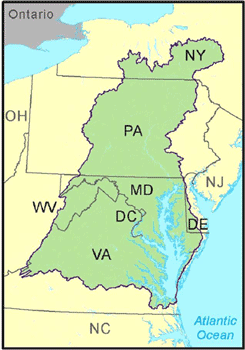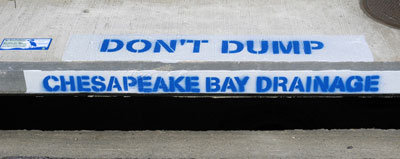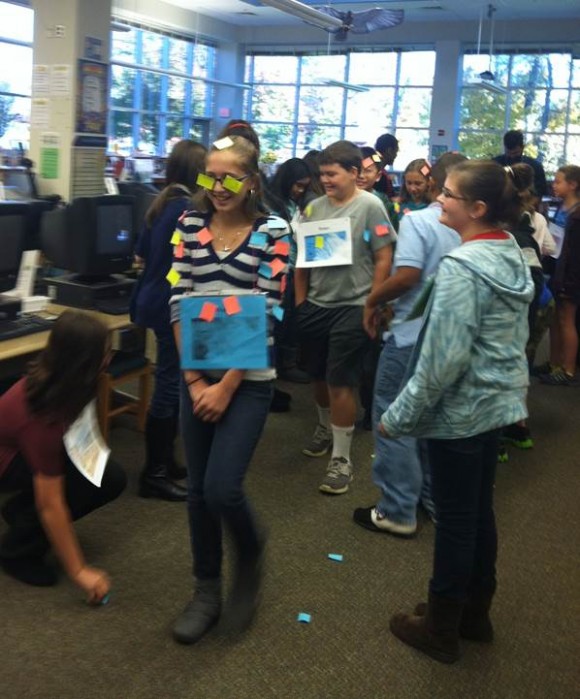Wednesday, June 12th, 2013...4:11 pm
Stormwater Fees in Maryland- Don’t call it a “Rain Tax”
As a Maryland native and a stormwater professional- it’s hard to believe I’ve held off on this one for so long, but after seeing headlines like this, and this, and this– I decided it was time to do some research.
In the past month, it was announced that Maryland will begin to phase in a stormwater utility fee, beginning with its 10 largest jurisdictions. The reaction has been pretty intense- and the misleading nickname of the new fee as a “rain tax” has not helped. Personally, Given the state of the Chesapeake Bay, I was shocked (shocked, I tell you!) that this action was not taken sooner.

The Chesapeake Bay Watershed: Almost every single drop of rain that falls in Maryland will eventually make its way into the Chesapeake Bay (Map: epa.gov)
So how are these fees determined- Am I going to get a bill every time it rains?
Unlike the unfortunate nickname suggests, these fees will not be levied to any greater extent when it rains a lot (nor to a lesser extent during a drought). They will be a steady fee each month. Stormwater utilities are already pretty common in other areas of the Country, and average below $5 per month. The fee amount is determined by the size of your property and the amount of impermeable area it contains. Impermeable areas are those where rainwater cannot sink in ( like roofs and parking lots). Rain that falls over these areas will runoff into local waterbodies- which- for almost the entire state of Maryland- means the Chesapeake Bay. When rain water runs off your property it is not clean anymore- it sweeps up any oils, greases, metals, pesticides, and other pollutants that it comes in contact with and carries them along into the nearest body of water, which eventually makes it’s way to the Bay. No matter where you live in Maryland, you’ve probably seen warning labels on the storm drains alerting you to this fact:

Storm Drains in Maryland lead to the Chesapeake Bay- or smaller bodies of water that eventually empty into the Bay (image: usda.gov)
What are they going to do with my money?
The money from the fees will be used to build and maintain projects to help clean the pollution that is already in the Bay, and to prevent future stormwater pollution from reaching the Bay. These projects include retention ponds, bio-swales, and rain gardens to hold and filter runoff water until in can soak into the ground. More information of the types of projects being considered can be found here.
The fees may also be used to support outreach and education efforts to deliver industry specific information on avoiding stormwater pollution to businesses, workshops for homeowners, and educational programs for school students.

Future Good Citizens: Students in Maryland simulate a rain storm to learn how rain water gets polluted, and how they can prevent it from happening in the future
In my opinion, this new stormwater utility is a good thing. The funds generated will aid in restoring our Country’s largest watershed, and should create jobs in the process. So please, don’t call it a “rain tax”- instead of getting “information” from misleading headlines- get the news straight from the horse’s mouth (that’s how that saying goes, right?) Here is what the State of Maryland has to say on the issue.
~Suzie







Leave a Reply